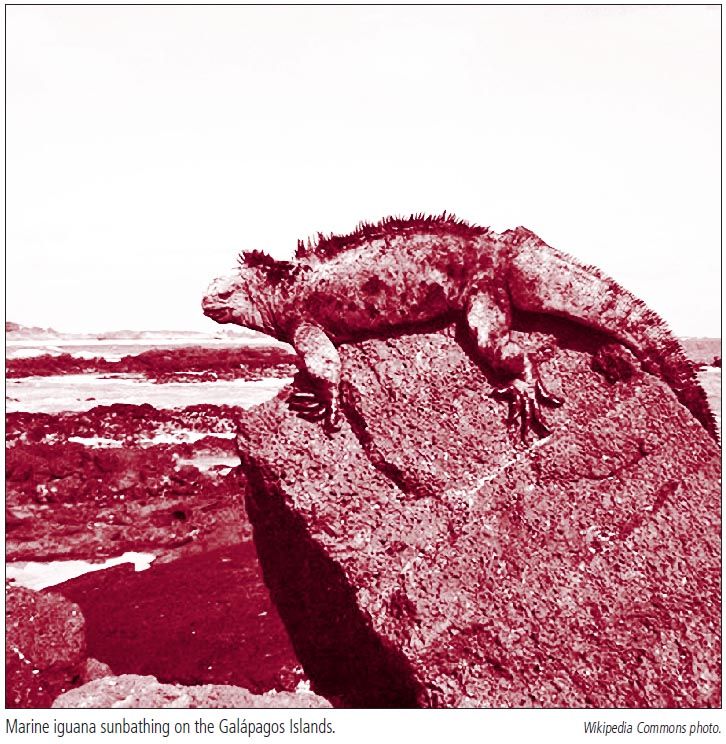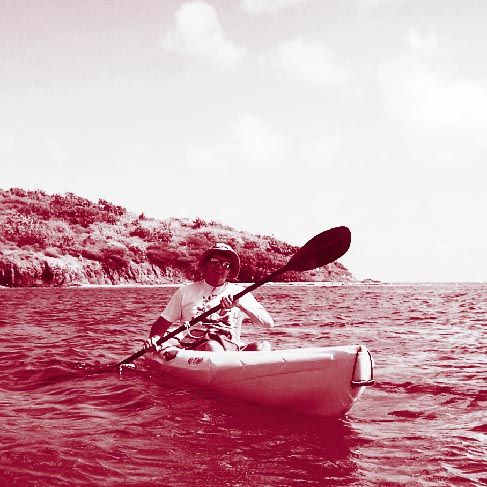Islands Invaded, Natives Nuked
Published on November 14th, 2012
PDF Download: islands_invaded_natives_nuked.pdf


 In the 1830s, the unique fauna of the isolated and remote Galápagos Islands inspired the imagination of a 26-year old gentleman naturalist named Charles Darwin. The frequently seasick Darwin was participating on a five-year voyage of exploration and discovery aboard the survey ship HMS Beagle.
In the 1830s, the unique fauna of the isolated and remote Galápagos Islands inspired the imagination of a 26-year old gentleman naturalist named Charles Darwin. The frequently seasick Darwin was participating on a five-year voyage of exploration and discovery aboard the survey ship HMS Beagle.
The extraordinary wildlife of the islands captivated Darwin’s attention and spurred his dogged intellect for decades afterwards; it played a crucial role in the inception of the theory of evolution by natural selection—a scientific advance with far-reaching scientific, philosophical, and controversial implications.
In particular, the clever adaptations of 15 species of “Darwin’s finches” to the rigors and opportunities of island life, from beaks of different sizes, shapes, and abilities to behavioral mannerisms, suggested to the young biologist that heritable traits which confer advantages on their bearers in the never-ending struggle for survival might tend to become more frequent in a population over time, leading to “descent with modification,” aka evolution.
The Galápagos are a rugged volcanic archipelago piercing the surface of the Pacific some 525 nautical miles west of Ecuador and the mainland of South America. Today, in recognition of their exceptional biodiversity and role in the history of science, the Galápagos have been named a UNESCO World Heritage Site, as well as a national park.
Alas, neither these designations nor the modest protection conferred by the Ecuadorian government have been sufficient to protect beleaguered Galápagos wildlife. Nearly two centuries of human incursions and exploitation, as well as infestations of exotic species introduced by human beings, have permanently marred the biodiversity of this wonderland.
As the Cornell Lab of Ornithology’s magazine Living Bird laments in a recent article, islands in general and these islands in particular have become laboratories of extinction as well as evolution.
Living Bird reports:
…between 1991 and 2010, the number of people living in the Galápagos Islands almost tripled to more than 30,000. Meanwhile, the number of tourists quadrupled, rising from 40,000 in 1990 to more than 173,000 in 2010. The Ecuadorian government has worked to limit the direct impact of tourism by restricting where tourists can go on the islands and by ensuring that they do not disturb the wildlife. But it has been far less successful in monitoring the constant flow of residents and commerce to and from the islands….
And the Galápagos are not alone. Throughout the world, the unique flora and fauna of islands— undergoing in isolation what evolutionary biologists call “adaptive radiation” and “speciation” (forming new species)—have been under assault for many centuries by growing human populations and associated threats. Over 90% of the bird species that humans have driven extinct since 1500 are “island endemics.” An endemic species is one that occurs nowhere else.
In the Galápagos, several distinctive populations of tortoise have been eliminated, as have three species of endemic rodents. Two species of Darwin’s finches are imperiled. Yet the Galápagos are actually faring better than many places. For example, Hawaii, far from being the tropical paradise of tourists’ fantasies, has been named the “extinction capital of the world.” Fully half of the 140 historically recorded species of birds native to the Hawaiian Islands have vanished as a result of pervasive, harmful human influences.
Halfway around the world, in another popular tourist playground, the Caribbean, the U.S. Fish and Wildlife Service observes that: [The Caribbean] ecosystem is home to 78 threatened and endangered species (29 animals and 49 plants), including species of birds, reptiles, and amphibians, as well as unique and diverse habitats ranging from coral reefs, sandy beaches, and mangrove forests to limestone hills and forested mountains….
Since the end of the Second World War, human population has increased dramatically on almost every island….negative ecological trends have all accelerated as a result of the demands explosive human growth has placed on the environment.
One of the species most menaced with extinction is the six-inch St. Croix ground lizard. Once found on the 83-square mile island of St. Croix, for which it was named, this tiny reptile was wiped out there in the 20th century by human disturbance, land development, and the introduced Indian mongoose, which ate it. Fortunately, a small population of ground lizards was discovered on Green Cay, an uninhabited 14-acre island just north of St. Croix, and this inadvertent sanctuary was declared a national wildlife refuge, precisely to protect these survivors.
Yet the total area of habitat occupied by this inconspicuous critter had been reduced by more than 99.9%, hardly a guarantee of its survival! One direct hit by a hurricane could potentially annihilate the St. Croix ground lizard forever. Also, aided and abetted by humans, rats made it to Green Cay, proliferated, and their omnivorous diet damaged the ground lizard’s habitat. Refuge staff have trapped out the rats and transplanted a small colony of the lizards to nearby rat-free Buck Island Reef National Monument. Let us hope these combined measures have made this humble creature’s place in the sun a little less tenuous for the time being.
California’s own Channel Islands are also home to many endemic species and subspecies of plants and animals. One of them, the island fox, evolved from the gray fox on the mainland of California, becoming a distinct species over 10,000 years ago. Unfortunately, the island fox population declined sharply in the 1990s due to a variety of complex causes, all directly or indirectly linked to human meddling in the ecosystem. The National Park Service is actively working to restore this endemic species through a variety of methods, including a captive breeding program.
While wildlife conservation efforts like these on islands are commendable, indeed indispensable, ultimately they will be futile unless human numbers are stabilized and human activities controlled and managed. Only then will we ensure that islands—these nurseries of new species—cease to be graveyards of species as well.

Leon Kolankiewicz ocean kayaking at Green Cay National Wildlife Refuge, U.S. Virgin Islands. Kolankiewicz is a wildlife biologist, environmental planner, and CAPS Senior Writing Fellow.




